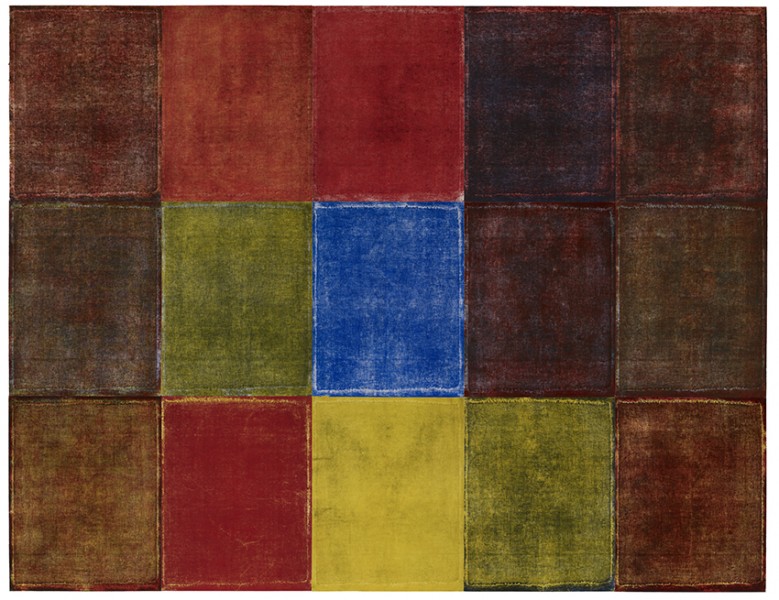
How does your work address the theme ‘to the edges’?
The work is experimental. I had been spending some time with Ruth Burgess, and was impressed and intrigued by her use of colour. I wanted to explore how, by printing just the primaries over one another, I could create a range of secondary and tertiary colours. My process would be revealed at the edges of each of the panels which comprised the work. The decision to print by hand rather than the press literally expresses the theme, since the printer must move the baren right to the edges of the paper to make each print.

Can you describe the technical process you went through to achieve the finished work and what technical challenges you encountered along the way?
I decided to avoid imagery as much as possible, so as to concentrate on the most important factors: colour and luminosity. To achieve luminosity within each print, I glued fabric over plywood and chose to print the plates in relief. This meant that the white of the paper showed through the weave of the fabric to enliven the colour on each print. The decision to print the work by hand was made to allow for incidental marks and imperfections to contribute to the work.
It was only part way through the printing process that I discovered that the way the plywood base of the plates was constructed had produced two bands on each print as a variation in the surface. The hand printing was challenging physically and technically since I am a quite recent convert to printing with a baren,but I realised the flaws in the printing gave the work a liveliness that wouldn’t be present had I opted for another process.
To begin with, I envisioned that the work would have 15 elements, but realised as I progressed through the making of the piece that I could have expanded it much further, although the size of the finished piece would have been even more unwieldy.
I had to confine it within arbitrary parameters, so I created a formula to work to. The constraints I set myself were
to use two plates only
to use yellow red and blue ink only, ie no colour mixing
to use four layers of ink on each print
to print by hand with a baren
Working at that scale was a challenge. The first time I was able to see the work as a whole was after it was installed on the gallery wall and appropriately lit. It is too large to fit on my studio wall.
What do you see as the role of Sydney Printmakers for the next 60 years?
I expect Sydney Printmakers to continue to attract members dedicated to excellence in the medium of print. ‘To the Edges’ demonstrates that the organisation welcomes experimentation, exploration and creativity within the medium of printmaking, and I think that is its strength.
How do you see the role of printmaking, in general, contributing to the conversation about contemporary art practice?
Printmakers have always been interested in new technologies, in new ways of responding to the world. I feel that printmaking will always have a place in contemporary art practice because it continues to evolve. Witness some of the prints in ‘To the Edges’ which explore the edges of contemporary practice.